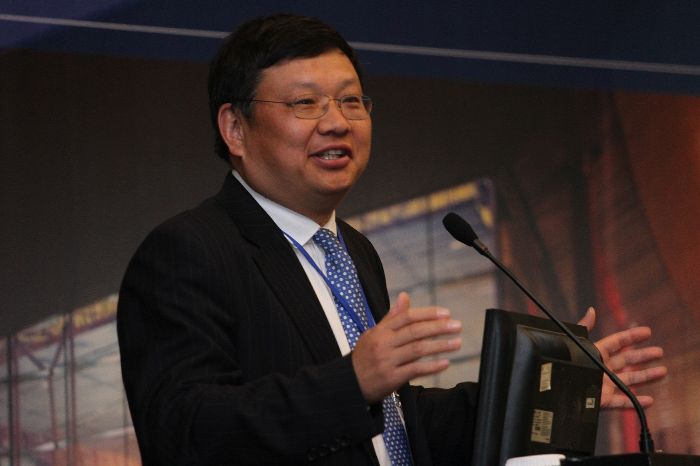China is crucial for the future of business development of the ASEAN region
This was far more than a holiday in Cambodia. From talks of increasing integration to internal squabbles and the rise of ASEAN’s lesser-known members, the 20th ASEAN Summit in April outlined the growing importance of this economic and political cooperative. It also showed that while there is great potential in the ASEAN alliance to strengthen South-east Asian integration, internal disputes still threaten to delay progress both inside and outside of the region. China is crucial to the future development of ASEAN, and the ties between China and ASEAN will undoubtedly impact business throughout the region. This was also a theme that resonated throughout the CKGSB China-ASEAN Business Forum held in Jakarta in mid-April. Setting the tone for the forum in his inaugural address, CKGSB Assistant Dean Zhou Li said, “I wish that through the joint efforts of all our business leaders China-Indonesia trade and economic relations will embrace a brighter future, and that China-ASEAN relations will also be boosted to new heights.”
Later in his keynote speech, CKGSB Founding Dean Dr Xiang Bing said, “Businesses and governments are crucial to promote sustainable development and innovation for the common good [of China and ASEAN].” A variety of speeches at the event, including one by H. E. Ambassador Liu Jianchao, China’s Ambassador to Indonesia, discussed ways in which China and ASEAN can work together. In his address, the Ambassador elaborated on how in recent years, Indonesia and China have been strengthening their ties. As an example, he cited a recent meeting in which a steel agreement worth around $70 billion was agreed upon.
While there has been a significant progress in these bilateral relations, the ties between China and members in ASEAN are far more complex and that reflects in the political tensions that came to the surface in the 20th ASEAN Summit. For instance, the dispute between China and the Philippines over the Spratly Islands in the South China Sea has threatened to disrupt economic progress between the two nations and also drag other neighboring countries into the mess. However, since the summit, tensions have cooled somewhat, and China’s ban on fishing off the islands is seen as a goodwill gesture.
Nations United
Contentious issues aside, this ASEAN Summit was more about welcoming some of the smaller nations and recognize their growing status in ASEAN. This was the first time Cambodia hosted the Summit since it became an ASEAN member around four years ago. The theme for the Summit – “One Community, One Destiny” – encapsulates the need to involve these smaller nations more fully in ASEAN politics and business, helping the region to grow as one entity in the future.
How China interacts with smaller nations such as Cambodia will be key in the development of a healthy and mutually beneficial ASEAN economy. This can be seen even with some of the slightly more established ASEAN states. Speaking at the CKGSB forum, Suryo Bambang Sulisto, Chairman of the Indonesian Chambers of Commerce, pointed out that China has played a major role as Indonesia’s biggest trading partner in 2009.
However, this needs to be further increased in order for the balance of trade and investment to improve. “ASEAN’s trade with China has been in deficit for the last ten years…. the figures tell us that the region is characterized by extremely unequal development. However, the growing interdependence [with China] cannot be ignored.” said Sulisto.
These sentiments were echoed at the Forum by Iman Pambagyo, Director General for the International Trade Cooperation at the Ministry of Trade of the Republic of Indonesia. He mentioned that “China has been Indonesia’s largest trading partner since 2011, with a total two-way trade of $49.1 billion in 2011”. However, China’s FDI in Indonesia was valued at only $173 million by 2011. Although acknowledging the fact that economic imbalances exist and that more needs to be done to improve trade and investment between the very largest and the very smallest within ASEAN, Pambagyo also pointed out that “China’s support to the ASEAN in establishing a region of comprehensive economic partnerships is really critical”.
Myanamar: Open for Business?
Myanmar, formerly known as Burma, is one of the smallest countries that has often been criticized for its political instability and has remained on the fringes of ASEAN for some time now. However, 2012 marks the beginning of Myanmar’s path to greater economic integration and acceptance, not only within ASEAN, but globally as well.
With international trade sanctions on Myanmar lifting, this brings the country firmly back into the economic fold in South-east Asia and opens up new opportunities for growth. However, there are some groups – such as the ASEAN Inter-Parliamentary Myanmar Caucus – that are cautious about rushing into rapid growth for fear that it will spark further political instability in the country. Whilst Myanmar’s political reforms are welcome, business between members of the ASEAN will rely on greater integration and unity of currencies, labor and business practices. Again, China’s role in this will be crucial.
There is a simple reason for that. As the largest and most powerful country in the region, China can help to dictate monetary and business practice stability. Talking at the forum, H.E. Ambassador Liu Jianchao said that if countries such as Indonesia and China work together under free trade, coupled with stable banking, exchanges rates and inflation controls, then members of the ASEAN can prosper even in an uncertain global economy.
Money Matters
One way that trade can be improved is for members of the ASEAN to work with China to establish greater currency integration in the region. Discussions on the side-lines of the main meetings in the ASEAN Summit suggest this is something that will develop further in the near future. The ASEAN+3 (the ASEAN and Japan, China and South Korea) have already taken a number of significant steps to further deepen monetary integration in the region, including the launch of the ASEAN Infrastructure Fund and the doubling of the Chiang Mai Initiative Multilateralisation. These measures offer further security for members ASEAN against market instabilities and the potential risk of recession.
A more stable ASEAN is good for China because it offers greater assurances regarding potential investments. This is, in turn, good for members of ASEAN who are looking for increased investment from China. As Gao Yang, Vice President of Peng Hua Fund Management Co., a China-based independent investment manager, pointed out at the CKGSB Forum, one of the main reasons why Chinese firms don’t look to invest in members of ASEAN is economic and political instability. Therefore, closer monetary integration that increases stability will allow for greater investment into ASEAN from China.
The Potential for Future Integration
Monetary integration is not the only area of integration that is now being agreed upon within ASEAN. At the recent Summit, agreements included increased protection for migrant workers in the region and a united campaign to stop drug trafficking. Such political and economic integration is important, and is something that China should and will be involved with in cooperation with members of ASEAN.
Tackling these problems is necessary for continued cooperation and growth between China and ASEAN, particularly as these economies continue to grow and increase in size and interdependence. According to The Phnom Penh Post, “An increase in regional labour flows has been accompanied by a steady stream of reports regarding large-scale human trafficking from Myanmar, Laos and Cambodia into Thailand, and the abuse of Cambodian and Indonesian maids in Malaysia.” This is why human worker protection is a key issue for ASEAN and China.
Integration also leads to stability, as Dionisius A. Narjoko, Researcher at the Economic Research Institute for ASEAN and East Asia, mentioned at the CKGSB forum. He described how ASEAN is a big and growing market with a rapidly increasing middle-class. However, just as China has struggled with the potential for overheating, ASEAN has these problems as well. That is why increased cooperation, sustainable growth, integration and infrastructure are all crucial for increased, stable prosperity and ties between China and ASEAN. As long as political differences can be overcome and further moves toward integration taken – something that seems to be the objective of both the recent ASEAN Summit and events such as the CKGSB China-ASEAN Business Forum – the economies of China and ASEAN can both prosper from each other over the coming years and decades.




















